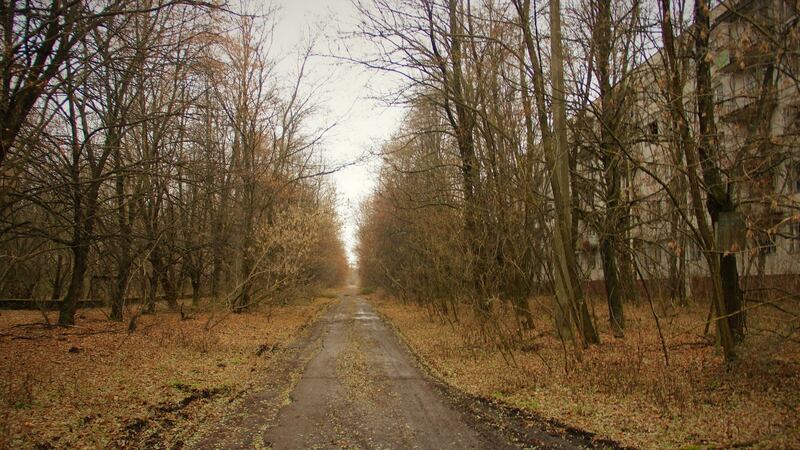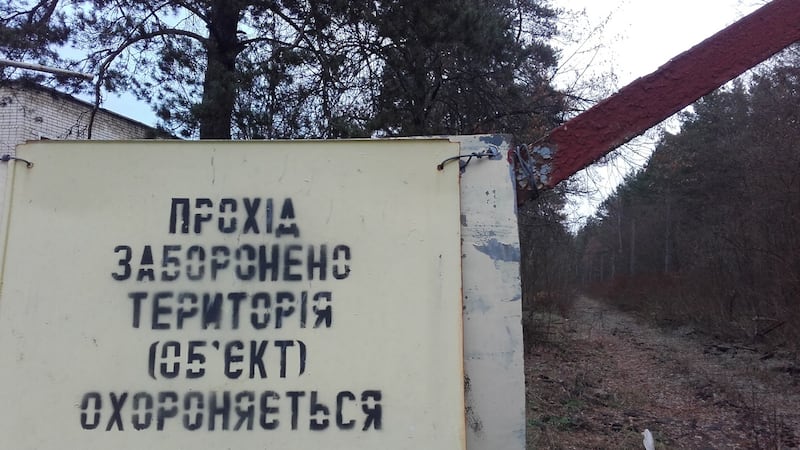To many, the term Chernobyl conjures up images of devastation, danger and fear. But in the 36 years since the April 1986 disaster, the surrounding area – cut off from human activity ever since – has been transformed by the unyielding forces of nature.
Rather than a barren dead zone, the absence of human activity has allowed the natural world to take over. Storks, wolf packs, wild Przewalski’s horses, elk, lynx, bison and other large animals have not only survived but thrived unencumbered from human activity.
Until last month, the area was wilderness of lakes, swamps, grasslands and woods that few ever got to experience. A huge sarcophagus sealing Reactor No 4 – the site of the 1986 disaster – stands as the only modern imprint on the landscape.

All that has changed with the February 24th invasion of Ukraine by Russian forces via Belarus, several kilometres to the north – they now control the Chernobyl nuclear facility.
While the immediate threat of a nuclear-related accident has mostly receded for now, more than 300 workers had been held hostage at the Chernobyl facility since before the invasion began. More recently, 64 workers were allowed to rotate out, having spent more than 600 hours working at the site. Forty-six employees are reported to have replaced those who have left.
In addition to the new uncertainty around Chernobyl and at a host of other at-risk nuclear power plants across Ukraine, important scientific work that’s been ongoing in the Chernobyl exclusion zone is now under serious threat.
The zone is a 2,634 sq km area dominated by coniferous and deciduous forests, and a vast floodplain created by the river Pripyat. Experts say that the forested areas of the zone have increased from 40 to 70 per cent in the decades since the disaster unfolded.
This unique ecosystem has drawn researchers and scientists from Spain, Ireland, the United States and beyond – as well as a host of Ukrainian scientists – to the region 130km north of the capital, Kyiv.
Researchers have feasted on this unique area: in some cases wading out into the swamps in the middle of the night in search of tree frogs in an attempt to assess their radiation levels.
“We have no information about what’s going on in the exclusion zone since the Russian invasion on February 24th. So, it is difficult to speculate about the environmental impact of the invasion there,” says German Orizaola of the University of Oviedo’s zoology unit, and who has made a series of research visits to the exclusion zone in recent years.

“For sure, noise experienced by wildlife there should have been quite high, and human movement much higher than in decades. I do not reject the possibility that some wildlife may have been hunted too.”
Orizaola says he is particularly worried about the Przewalski’s horses whose Chernobyl population stands at less than 200, or about 10 per cent of the total world population for the species.
Thought to be the last truly wild horse, the Przewalski's horse is an endangered species originating in Central Asia. In 1998 scientists introduced 30 horses into the Chernobyl exclusion zone in a bid to preserve their numbers. In the years since, the horses have thrived, with about 150 horses believed to now live in the exclusion zone with another 30 in an adjacent region over the border with Belarus.
“They are big, not particularly afraid of humans, and with some herds quite close to main roads in the zone,” says Orizaola.
Broader threat
Away from the flora and fauna, the broader threat of a nuclear-related accident in Ukraine remains very real.
The extraordinary footage livestreaming Russian forces attack on the Zaporizhzhia nuclear plant – the largest of its kind in Europe – in the early hours of March 4th illustrated clearly the dangers the ongoing conflict presents.
Streamed by the power plant’s cameras, scenes of raging gunfire as Russian tanks advanced on the site unfolded over the course of more than four hours. Security camera footage showed Russian forces preventing a Ukrainian firefighting crew from entering the site, and rocket-propelled grenades being shot into an administrative building, according to detailed analysis of the footage conducted by National Public Radio in the US.
“Photos show that an administrative building directly in front of the reactor complex was shredded by Russian fire. And a video from inside the plant shows damage and a possible Russian shell that landed less than 250ft from the Unit 2 reactor building,” NPR reported.

According to the Ukrainian state-owned grid operator Ukrenergo quoted by the German news agency, Deutsche Welle, around March 4th Russian forces went as far as placing munitions close to a reactor at the Zaporizhzhia nuclear power plant.
Ukraine is home to four nuclear plants consisting of 15 reactors. According to Energoatom, the Ukrainian nuclear regulator, eight of those are still operating, including two at Zaporizhzhia in the southwest, three at Rivne close to the border with Poland, one at Khmelnytskyy in the northwest, and two at the South Ukraine plant.
Aside from the threat of direct physical damage to a reactor resulting from the armed conflict, nuclear power stations need a ready and constant supply of water that ordinarily requires electricity to be pumped. That means the threat and instability presented by the conflict remains very real.
"The reactors that are not operating still need cooling and depend on the electrical grid for running their cooling systems [pumps, control systems, valves]. So grid connectivity is essential for cooling the reactors," says Prof Bahram Nassersharif, nuclear engineering programme director at the University of Rhode Island.
In a war situation the electrical grid is sometimes a strategic target and therefore becomes unstable or unavailable for a period of time, he notes. “Regulatory agencies such as the IAEA monitor the situation with grid connectivity of the powered down reactors. They also monitor radiation levels at each site. So far, radiations levels have been normal and grid connectivity has been maintained even after interruptions. The nuclear plants have back-up diesel generators that can provide essential electricity in the event of disconnection from the electrical grid.”
“As long as cooling can be maintained, expert staff can continue to attend to operations, and the radiation monitoring shows normal conditions, the risks of radiation releases are very small,” Prof Nassersharif adds.
But that’s a big if. In the midst of a highly volatile conflict there’s significant potential for the loss of direct access to electricity or securing adequate reserves of back up diesel fuel.
Another concerning unknown, say experts, is the conditions at the Chernobyl nuclear power plant, since the IAEA is not receiving “direct remote data transmission from the radiation monitoring systems” located there.
Still, some believe the threat of a nuclear calamity at Chernobyl is perhaps not currently that significant.
“[The] spent nuclear fuel maintained there is cold, and even with problems with the electricity, should not represent any problem and regional scale,” says Orizaola.
A key point to remember, he says, is that nuclear power plants are very solid designs, with plenty of security systems and can withstand much in the way of physical duress. “So unless they experience a very heavy and deliberate attack, risk should be low there too.”
On a personal level, for Orizaola the events of the past month have been deeply troubling. He says friends he worked with for years are under the threat of shelling or are running low on food supplies."At the same time, I have seen many familiar places destroyed by the war, the now infamous Irpin bridge, Hotel Ukraine in Chernihiv where we celebrated a scientific conference in 2016 [bombed on March 12th]...There is always the worrying possibility of not going back to Chernobyl for many, many years."








